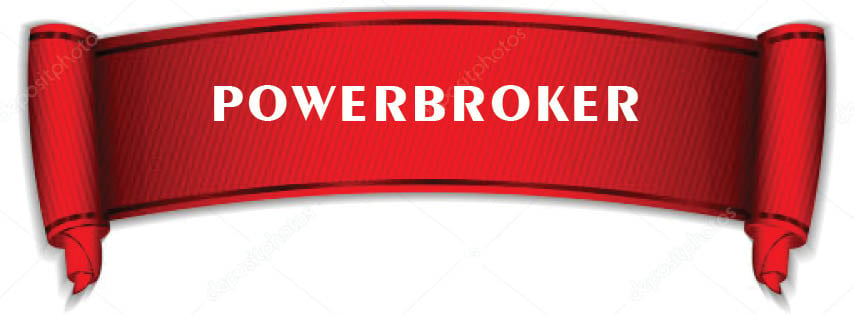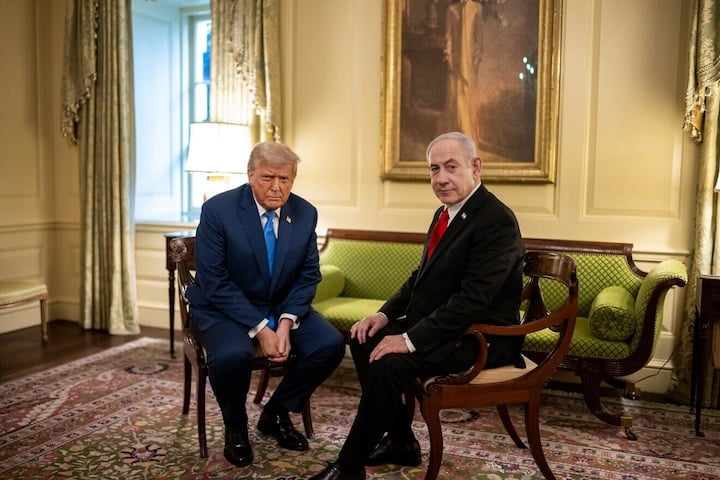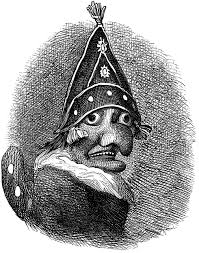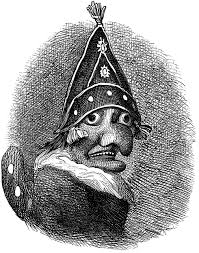
Q-Day
There is a future point in time, as yet undefined, when mankind will create exquisite chaos. There is reason to celebrate, and reason to fear, what it portends. Charlatan follows the math and science to Palestine, and those who won and lost the Nobel Prize in 2025.

Benjamin Netanyahu apologizes to Qatari Prime Minister at White House 29 September 2025.
Distinguishing how our immune system attack germs, or our bodies for that matter, took the Nobel Prize in Medicine for it’s insight into why our body’s natural immune system can turn against us.
Roughly 600 million people around the world have been diagnosed with diabetes. By 2040, those numbers are projected to increase to 1 billion, according to the International Diabetes Federation. Most at 90% are living with Type 2 diabetes, which can be driven by diet, inertia, and obesity. The remaining 10% have Type 1 diabetes, a function of the autoimmune system turning on itself.
T cells are trained to spot bad actors. They recognize and eliminate specific pathogens including viruses, bacteria, and cancer. If and when they defect, or overreact, it can trigger autoimmune diseases. However, a trio of scientists have identified a malfunctioning Foxp3 gene that seems to control the development of regulatory T cells, which in turn act as security guards that ferret out and curb other forms of T cells that overreact. From a DNA perspective, it’s a tiny alteration that causes a massive change to the immune system.
Awarded to Mary E. Brunkow, Fred Ramsdell, and Shimon Sakaguchi for their discovery of regulatory T cells (Tregs), their discovery accomplishes two main things: 1) It will lead to new treatments for autoimmune diseases by suppressing the immune system's attack on the body; and 2) to treatments for cancer by unleashing the immune system on bad actors.
All as lego-like Metal-organic frameworks (MOFs) — customized central metal ions and organic linkers — are being unleashed into the atmosphere. A gram of MOF has the internal surface area equivalent of a football field, maybe two.
Specifically, MOFs’ can purify water, capture carbon, and advance medical treatments, too. By targeting the drug delivery systems for cancer, bacterial infections, and inflammatory diseases, MOFs’ unique porous structure allows for high drug loading, controlled release, and the use of the framework itself as a therapeutic agent.
However, metal ions and organic linkers can generate reactive oxygen species (ROS), and cause oxidative stress or direct cell damage. The toxicity level is influenced by the MOF's specific metal and linker composition, particle size, stability, and application.
Are MOFs’ biocompatible, or even biodegradable, materials appropriate for biomedicine and food industries? For non-emergency concerns, give the Food and Drug Administration a shout at 1-888-INFO-FDA.
All things being equal, the Nobel Prize in Chemistry 2025 was awarded jointly to Susumu Kitagawa, Richard Robson and Omar M. Yaghi "for the development of metal–organic frameworks.”
And just as the hidden and chaotic world of quantum mechanics — first described by German physicist Werner Heisenberg in 1925 — is marked by a discovery of macroscopic quantum mechanical tunneling that’ll take quantum computers into the future.
Until now, “Harvest now, decrypt later,” was the strategy that relied on acquiring currently unreadable encrypted data, and storing it in one of over 11,800 data centers worldwide. That data has been waiting upon breakthroughs in decryption technology that will render it readable in future. The hypothetical date referred to as Y2Q or Q-Day has arrived.
Quantum mechanics is the foundation of all digital technology. However, quantum computers lacked the processing power to break widely used cryptographic algorithms. Encrypting data, and destroying the key, enabled criminals, governments, and global corporations to dwell hieroglyphically in an atmosphere of absolute privacy—until now. By revealing quantum physics in action, scientists can observe, develop, and now decrypt the next generation of quantum technology.
The Nobel Prize in physics was awarded jointly to John Clarke, Michel H. Devoret and John M. Martinis who discovered quantum physics on a macroscopic scale, paving the way for quantum computing.
All, as it were, colliding with a Hungarian writer who was recognized for work characterized by uniquely long, complex sentences about existentialism. He’s been called the “Master of the Apocalypse.”
He’s been called the “Master of the Apocalypse.”
“The Melancholy of Resistance” emerged in 1989, coinciding with the Eastern Bloc undergoing major social unrest. A political allegory, a mysterious Prince, and circus, arrive in a restless town under the spell and auspices of freedom. In “War and War,” a Hungarian man obsessed with a mysterious manuscript travels to New York City.
Few knew the writer lived with the American poet, Allen Ginsberg, in the 1990’s when composing. Fewer still that he was scrutinizing U.S. President Bill Clinton's mandate for universal health care, tax increases, welfare reform, and the Republican Revolution of 1994. A finely curated thesis for conservative backlash, the writer envisions an authoritarian regime somewhere beyond Clinton’s bridge to the 21st century.
If without reference to Viktor Orbán, “Herscht 07769,” published in 2021 in Hungary, follows a fictional man and town grappling with conspiracy theories, nationalism, and the resurgence of Neo-Nazism and fascism in Europe. The 400 page manuscript is a single, sprawling sentence blistering with satire written coterminous with the creation of Hungary’s Respect and Freedom Party, and subsequent rise of Péter Magyar.
The Nobel Prize in Literature 2025 was awarded to László Krasznahorkai “for his compelling and visionary oeuvre that reaffirms the power of art in the midst of apocalyptic terror.”
Finally, Venezuelan opposition leader María Corina Machado won the Nobel Peace Prize “for her tireless work promoting democratic rights for the people of Venezuela and for her struggle to achieve a just and peaceful transition from dictatorship to democracy.”
Hours after Friday’s announcement, Machado wrote on X: “Today, more than ever, we count on President Trump, the people of the United States, the peoples of Latin America, and the democratic nations of the world as our principal allies to achieve freedom and democracy. I dedicate this prize to the suffering people of Venezuela, and to President Trump for his decisive support of our cause!”
Did Trump deserve the Nobel Peace Prize for Gaza's third and fingers crossed final cease-fire deal as he claimed? If the Nobel Prize committee's intention was to award a person or organization that’s done the "most or the best work for fraternity between nations; for the abolition or reduction of standing armies; and for the holding and promotion of peace congresses," then the committee confused a political movement with a historic moment. However, Trump's declaration of creating a wider “peace in the Middle East” on Monday in Egypt gives rise to pie in the sky.
Instructing Israel’s Prime Minister Benjamin Netanyahu to read an apology over the phone and before the world to the Qatari PM was theater. Rounding up Türkiye, Egypt, and Qatar into a “Declaration for Enduring Peace and Prosperity" with the United States was not. Nor was rallying 17 or so consorts into a consortium he’s calling the “New Middle East.” That required a trickier, more sophisticated skill set called "statecraft."
However, while the declaration called for "peace, security, stability, and opportunity for all peoples of the region,” it was sparse with specifics on the path forward. In fact, the 20-point Gaza Peace proposal doesn’t explicitly call for a Palestinian state, but rather calls statehood "the aspiration of the Palestinian people." It speculates that “if the Palestinian Authority is reformed, and the Gaza Strip is rebuilt, conditions may finally be in place for a credible pathway to Palestinian self-determination and statehood.”
Even so, Trump has condemned calls for a Palestinian state in recent weeks, but when asked on Monday aboard Air Force One about Egyptian President Abdel Fattah el-Sisi salvo at the PEACE 2025 roundup the president required clarification. El Sisi had declared: “A two-state solution is the only way to peace in the Israel-Palestinian conflict.” Trump replies:
I'm talking about something very much different. We're talking about rebuilding Gaza. I'm not talking about single state or double state or two state. A lot of people like the one-state solution. Some people like the two-state solution. We'll have to see. I haven't commented on that. At some point I'll decide what I think is right, but I'd be in coordination with other states.
For clarity, heres what is verifiably true. On 7 October 2023 Hamas and other Palestinian militant groups launched a surprise attack on Israel; 1,195 Israelis and foreign nationals were killed; and 251 were taken hostage with the singular goal to force Israel to release all Palestinian prisoners. After two years, 20 living Israeli hostages were freed by Hamas; in exchange for nearly 2,000 Palestinian detainees and prisoners release; albeit at the cost of 67,000 Palestinian civilians. The UN’s Human Right’s Office confirms that 70% were women and children.
“Now the rebuilding begins,” Trump said, when signing the Gaza peace plan. If or whether a demilitarized Palestine, whose residents have neither statehood, nor the protection of statehood, are to be governed by Trump et. al. and their shared vision for developing Gaza into a commercial “Riviera of the Middle East” we needn’t look any further than the 2025 Nobel Prize in Economics awarded to Joel Mokyr, Philippe Aghion, and Peter Howitt.
For their discovery called — Creative Destruction: The process where new innovations replace old ones and drives economic growth — “they’ve identified the prerequisites for sustained growth through technological progress.” According to the Economic Science, it seems that a recurring cycle of destruction and innovation is the key to sustainability, growth, and life as we know it for now.
Archives








